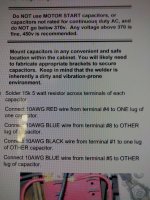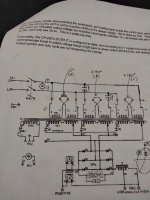Hello all
I know this is an ancient subject But I have a concern on the correct way to wire the two capacitors in the conversion. There seems to be a discrepancy between the written Step by Step instructions and the actual wiring diagram which I decided to post for all to see and compare. How do you post picture when the message "the uploaded file is too large" better yet how do you post pictures?
I know this is an ancient subject But I have a concern on the correct way to wire the two capacitors in the conversion. There seems to be a discrepancy between the written Step by Step instructions and the actual wiring diagram which I decided to post for all to see and compare. How do you post picture when the message "the uploaded file is too large" better yet how do you post pictures?
Last edited:



